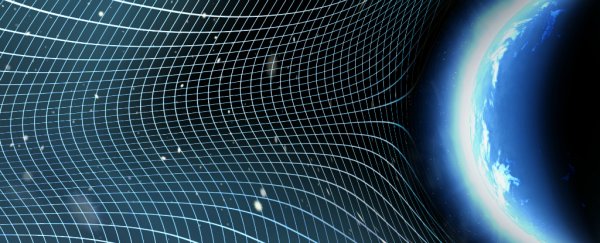Physics can be pretty intense at times, but one of the most straightforward aspects is that everything in the Universe is controlled by just four fundamental forces: gravity, electromagnetic, and strong and weak nuclear forces.
But now physicists in Hungary think they might have found evidence of a mysterious fifth force of nature. And, if verified, it would mean we'd need to rethink our understanding of how the Universe actually works.
Before we get into that, let's go back to those four forces for a second, because they're pretty important. They're a fundamental part of the standard model of physics, which explain all the behaviour and particles we see in the Universe.
Starting from the larger end of the scale, gravity is responsible for holding together the planets and gravity, and electromagnetic force is in charge of keeping our molecules together.
"At the smallest level are the two other forces: the strong nuclear force is the glue for atomic nuclei, and the weak nuclear force helps some atoms go through radioactive decay," writes Ryan F. Mandelbaum for Popular Science. "These forces seemed to explain the physics we can observe, more or less."
Evidence of this fifth force was spotted last year, when a team from the Hungarian Academy of Science reported that they'd fired protons at lithium-7, and in the fall out, had detected a brand new super-light boson that was only 34 times heavier than an electron.
As exciting as that sounds, the paper was mostly overlooked, until a team in the US published their own analysis of the data at the end of last month, on pre-print site arXiv.
The US team, led by Jonathan Feng from the University of California, Irvine, showed that the data didn't conflict with previous experiments, and calculated that the new boson could indeed be carrying a fifth fundamental force - which is when the science world started to get interested.
That paper hasn't been peer-reviewed as yet, so we can't get too excited, but it was uploaded so that the other physicists could scrutinise the results and add their own findings, which is what's happening now.
As Nature magazine reports, researchers around the world are racing to conduct follow-up tests to verify the Hungarian discovery, and we can expect results within around a year.
But if you're anything like me, you're probably wondering, what does a super-light boson have to do with a new force of nature?
This isn't the first time researchers have claimed to detect a fifth force (there's even a Wikipedia page for fifth force possibilities), but the search has really heated up over the past decade. Many scientists think there might be a particle out there called a 'dark photon', which could carry a new force that would explain dark matter - that invisible substance that makes up more than 80 percent of the Universe's mass.
That's what the Hungarian team, led by physicist Attila Krasznahorkay, were looking for. To do that, they fired protons at thin targets of lithium-7, a collision that created unstable beryllium-8 nuclei, which then decayed into pairs of electrons and positrons.
"According to the standard model, physicists should see that the number of observed pairs drops as the angle separating the trajectory of the electron and positron increases," Edwin Cartlidge writes for Nature.
But that wasn't what the team saw - at about 140 degrees, the number of these pairs jumped, creating a little bump before dropping off again at higher angles.
This 'bump' was evidence of a new particle, according to Krasznahorkay and his team. They calculated that the mass of this new particle would be around 17 megaelectronvolts, which isn't what was expected for the 'dark photon', but could be evidence of something else entirely.
"We are very confident about our experimental results," Krasznahorkay told Nature. He says that the chance of this bump being an anomaly is around 1 in 200 billion (but let's keep in mind that no other team has confirmed this as yet.)
The analysis by Feng's team in the US didn't involve a repeat of the experiment, but simply used calculations to verify that, theoretically at least, the proposed super-light boson Krasznahorkay detected could be capable of carrying a new fundamental force.
Like all good scientists, the physics community is pretty skeptical about the claims so far, especially seeing as the super-light boson wasn't what anyone expected to find.
"It certainly isn't the first thing I would have written down if I were allowed to augment the standard model at will," Jesse Thaler from MIT, who wasn't involved in either study, told Nature. But he admitted that he's paying attention to what happens next. "Perhaps we are seeing our first glimpse into physics beyond the visible Universe," he added.
If the international research community sticks to its word and gives us some more data to analyse in the next year, hopefully we won't have to wait too long to find out.
